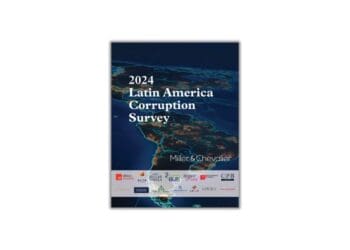Indictments and Other Developments
Following indictments unsealed last week, Michael Volkov revisits the 1MDB scandal, from the major players to the various wrongdoings.
The 1Malaysia Development Berhad scandal (1MDB scandal) has been making headlines for the past few years. The turning point for U.S. prosecutors was the cooperation of Malaysian law enforcement and the corruption allegations surrounding Malaysia’s former Prime Minister Najib Razak. At the center of this scandal is Goldman Sachs, which profited from $3 billion in bond issues on behalf of the 1MDB fund.
The interesting question, as can be seen from a review of the facts, is whether and to what extent the DOJ will hold Goldman Sachs accountable for the pervasive misconduct that occurred in relation to the 1MDB events. Goldman Sachs’ managers, employees and agents were involved in and many knew about the bribery. Just as troubling, Goldman Sachs’ internal controls and transaction review process was clearly circumvented and defective. Goldman Sachs is clearly cooperating with the ongoing investigation and prosecution, but we shall see how much, and if at all, they are held accountable.
The individual characters involved in the 1MDB scandal include Low Taek Jho (Jho Low), Ng Chong Hwa (Roger Ng) and Tim Leissner. Last week, a three-count criminal indictment was unsealed, charging Jho Low and Roger Ng with three counts: FCPA conspiracy (bribery), FCPA conspiracy (circumvention of controls) and conspiracy to money launder.
At the same time, the court unsealed a two-count information and guilty plea entered by Tim Leissner, charging Leissner with two counts of FCPA violations: bribery and circumvention of controls. Leissner agreed to forfeit $43 million. Leissner was the former Southeast Asia Chairman of Goldman Sachs. Ng was arrested in Malaysia. Low remains at large and is believed to reside in China.
1MDB was a state-owned investment company formed in 2009 (and the successor to a Malaysian sovereign wealth fund). 1MDB was focused on investments in energy, real estate, tourism and agribusiness.
After the 2018 election, newly-elected Prime Minister Mahathir Mohamed reopened the probe of the 1MDB scandal and barred former Prime Minister Najib Razak from leaving the country. The Malaysian government seized huge amounts of cash and other items from Razak’s premises and charged him with various criminal offenses. The Malaysian law enforcement authorities increased cooperation with the U.S. Department of Justice to investigate and prosecute responsible individuals.
Goldman Sachs played a central role in the funding and activities of the 1MDB fund. It arranged three separate bond offerings for approximately $6.5 billion. According to the indictment, $2.7 billion was misappropriated by Jho Low, Roger Ng and others and distributed as bribes and kickbacks to Malaysian and Abu Dhabi government officials and their families, including co-conspirator Tim Leissner.
Roger Ng conspired with other Goldman Sachs employees and agents to circumvent Goldman Sach’s internal controls. The indictment specifically explained that Goldman Sach’s internal accounting controls were overseen and enforced by its compliance function and part of the legal department. In reviewing and approving the corrupt transactions, Goldman Sach’s business culture was “highly focused on consummating deals, at time prioritizing this goal ahead of the proper operation of its compliance functions.”
The criminal scheme centered on Jho Low and his relationships with high-ranking Malaysian and Abu Dhabi government officials. Beginning in 2009 and continuing to 2014, Low, Ng, Leissner and others used Low’s relationships to secure business for Goldman Sachs and its role in the three bond offerings referred to as “Project Magnolia,” “Project Maximus” and “Project Catalyze.” Goldman Sachs earned approximately $600 million in fees for its role in the bond offerings.
Low, Ng and Leissner laundered their illegal proceeds through the U.S. financial system by purchasing luxury residential real estate in New York City and elsewhere and artwork from an auction house, as well as by funding major Hollywood films.
Project Magnolia resulted in issuance of $1.75 billion in bonds guaranteed by an Abu Dhabi entity. To accomplish the offering, Low, Ng and Leissner (and others) knew they would have to pay bribes to Malaysian and Abu Dhabi officials. Goldman Sachs was selected as the sole bookrunner and arranger for the bond offering. Approximately $500 million of the bond proceeds were diverted from 1MDB through wire transfers to bank accounts in the name of shell companies owned and controlled by Low, Leissner, Ng and other co-conspirators.
Project Maximus and Project Catalyze occurred during 2012 and 2013. Both projects were designed to raise more than $4 billion for 1MDB. Again, Low, Ng, Leissner and others diverted proceeds to pay bribes and kickbacks to themselves.
Low, Ng, Leissner and other co-conspirators again used wire transfers to shell companies to launder billions of dollars of misappropriated funds from Project Maximus and Project Catalyze. Low acquired a $35 million condominium in New York City using a portion of the proceeds. Also, Low spent approximately $137 million to purchase works of art at high-end auction houses in New York City.
This article was republished with permission from Michael Volkov’s blog, Corruption, Crime & Compliance.



 Michael Volkov is the CEO of The Volkov Law Group LLC, where he provides compliance, internal investigation and white collar defense services. He can be reached at
Michael Volkov is the CEO of The Volkov Law Group LLC, where he provides compliance, internal investigation and white collar defense services. He can be reached at 





